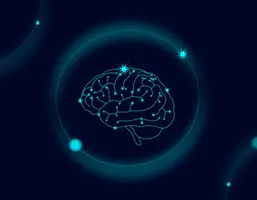Project Outline/Description
CNNs are powerful tools for recognizing patterns in images and videos. They are being used in a variety of activity recognition tasks such as human activity recognition. By using labeled data, a CNN can be trained to identify activities in unseen images and videos
Convolutional neural networks (CNNs) are a type of deep learning neural network that are ideally suited for recognizing patterns in images and videos. They are used to recognize objects, classify them, and map them to a specific output. CNNs are popular in computer vision tasks due to their ability to capture spatial features in an image. They can be used for a variety of activity recognition tasks such as human activity recognition.
Human activity recognition using CNNs typically involves using a pre-trained CNN model to extract features from a sequence of images or frames. These features are then used to classify the activity that is being performed in the video. For example, a CNN can be used to classify a person’s movements as walking, running, or jumping. The CNN can also be used to detect objects such as cars, buildings, and people in the video.
Application
Human activity recognition (HAR) using OpenCV and Python is a promising research area with several applications and a broad scope. Some of the applications and scope of the project are:
- Healthcare: HAR has significant potential in healthcare, particularly in monitoring the activities of elderly and disabled individuals. It can help identify early signs of mobility issues, provide early intervention, and improve the quality of life of patients.
- Sports: HAR can be used to track and analyze the performance of athletes in various sports. For instance, it can be used to monitor the movements of soccer players, identify the types of shots in basketball, and track the motion of tennis players.
- Security: HAR can be used in surveillance systems to identify suspicious behavior or activities. It can help detect intruders, track their movements, and provide real-time alerts to security personnel.
- Smart homes: HAR can be used in smart homes to monitor the activities of residents, adjust lighting and temperature settings, and control appliances.
- Human-robot interaction: HAR can be used to enable robots to recognize human activities and respond accordingly. It can help improve the interaction between humans and robots and enable robots to perform tasks more efficiently.
Requirements
Recognizing Human Activity Using OpenCV and Python
Hardware:
- A computer with a GPU
- At least 8GB of RAM
- At least 200GB of storage
Software requirements:
- Python 3.x
- OpenCV – Anaconda Software:
- Python 3.6 or higher
- OpenCV library
- TensorFlow
- Keras
- Anaconda
What you will learn?
As an AI language model, I do not have the capability to work on projects or perform any physical tasks. However, I can provide guidance and support by answering questions and providing insights related to human activity recognition using OpenCV and Python.
For individuals who are working on this project, completing it successfully can have several benefits, including:
- Improved understanding of computer vision and machine learning algorithms.
- Enhanced programming skills in Python and OpenCV.
- Gaining experience in developing real-world applications that can be useful in various industries.
- Contributing to research in the field of human activity recognition and advancing the state-of-the-art.
- Building a portfolio of projects that can be showcased to potential employers or clients.
- Developing problem-solving and critical thinking skills.
Overall, completing a project on human activity recognition using OpenCV and Python can be an excellent opportunity to learn, grow, and contribute to the field of artificial intelligence and machine learning.




